Have you ever wondered how to transform your bare walls into a living, breathing sanctuary? You’ll discover nine distinctive ways to integrate nature into your home through strategic plant placement and artistic arrangements. From floating shelves that maximize vertical space to preserved moss features that require zero maintenance, each style offers unique benefits for both design aesthetics and plant health. Let’s explore how these innovative approaches can revolutionize your indoor environment with detailed measurements, installation tips, and specific plant recommendations.
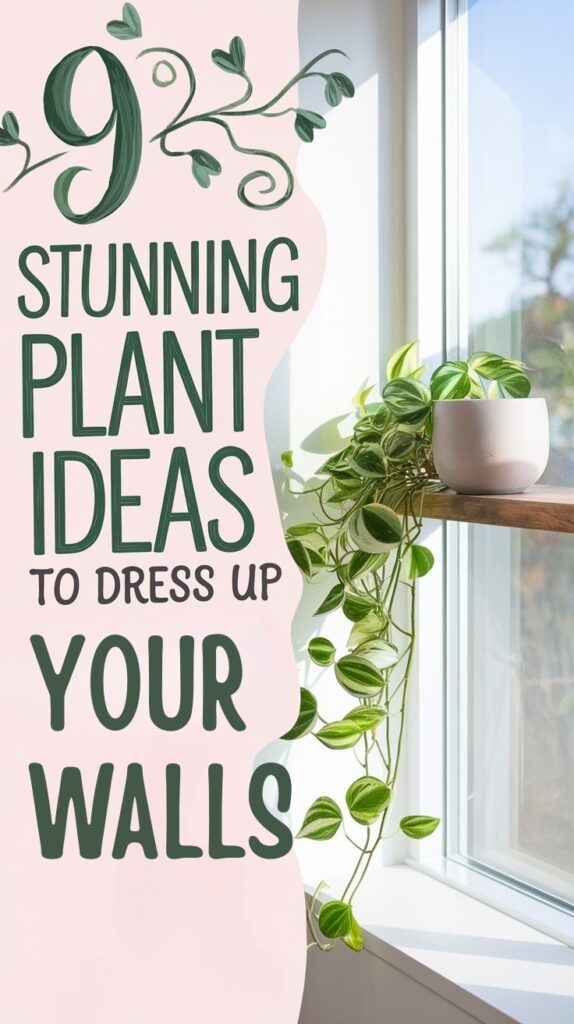
Contents
Floating Plant Shelf Gardens
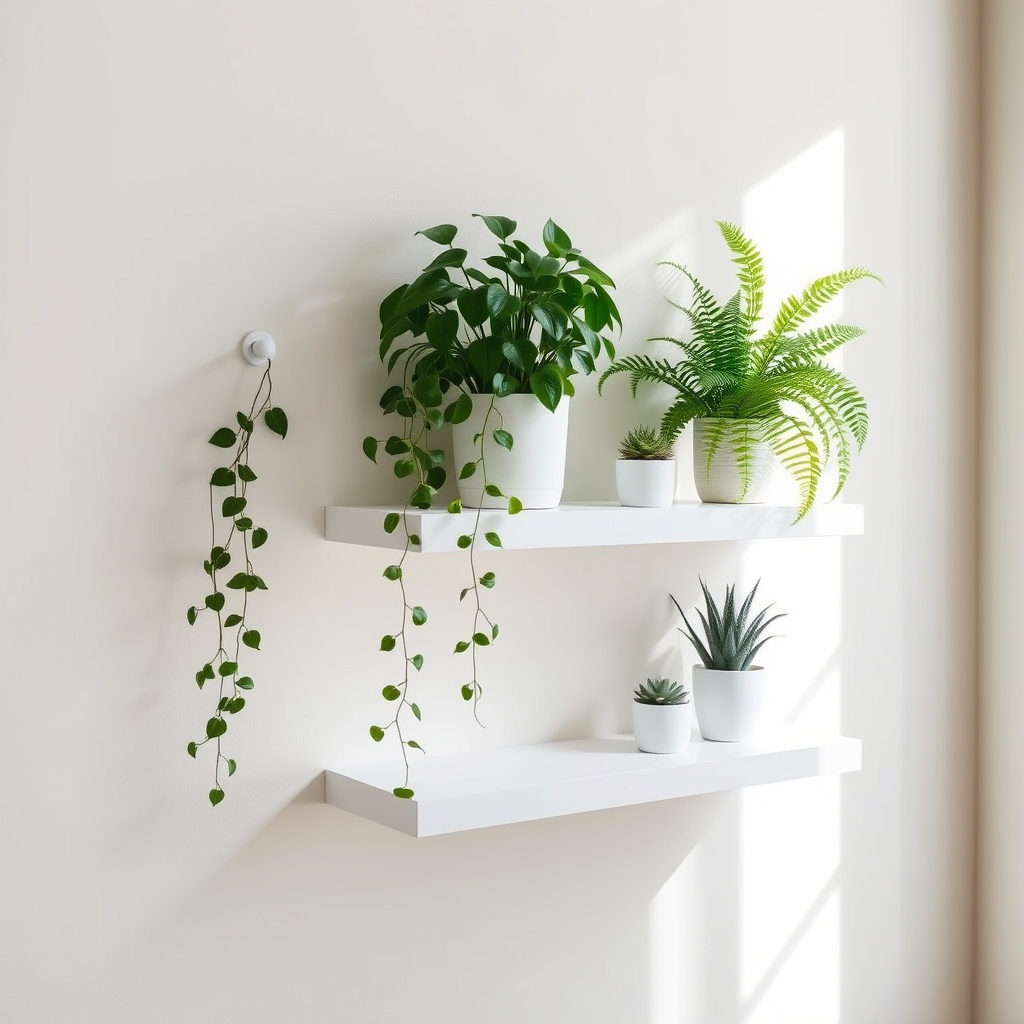
Floating Plant Shelf Gardens are minimalist wall-mounted installations featuring sleek, bracket-free shelving that appears to hover against the wall.
These contemporary display systems typically consist of invisible-mount shelves arranged in various patterns, creating a weightless, suspended effect for displaying small potted plants, trailing vines, and succulents.
The shelves can be arranged in asymmetrical layouts, graduated heights, or geometric configurations, allowing plants to become living art pieces.
This style maximizes vertical space while maintaining a clean, uncluttered aesthetic, making it particularly suitable for modern interiors and small spaces where floor space is limited.
Living Wall Art Installations

Living Wall Art Installations are vertical gardens that combine artistic design with live plants to create dynamic wall-mounted displays.
These installations feature a variety of plants arranged in patterns, shapes, or abstract compositions, growing in specialized panel systems with built-in irrigation. Plants are strategically placed in pockets or modules attached to a moisture-resistant backing, allowing them to grow vertically while maintaining healthy root systems.
The installations can range from small framed pieces to massive wall-spanning gardens, incorporating different plant textures, colors, and sizes. Common elements include ferns, mosses, succulents, and tropical foliage plants.
A key distinguishing feature is their dual purpose as both functional growing spaces and aesthetic artwork, often changing appearance throughout seasons as plants grow and develop.
Unique features include:
- Self-contained irrigation systems
- Modular design for plant replacement
- Living, breathing artwork that evolves over time
- Integrated lighting for indoor installations
- Natural air purification properties
- Custom designs to match specific spaces or themes
Geometric Plant Grid Systems
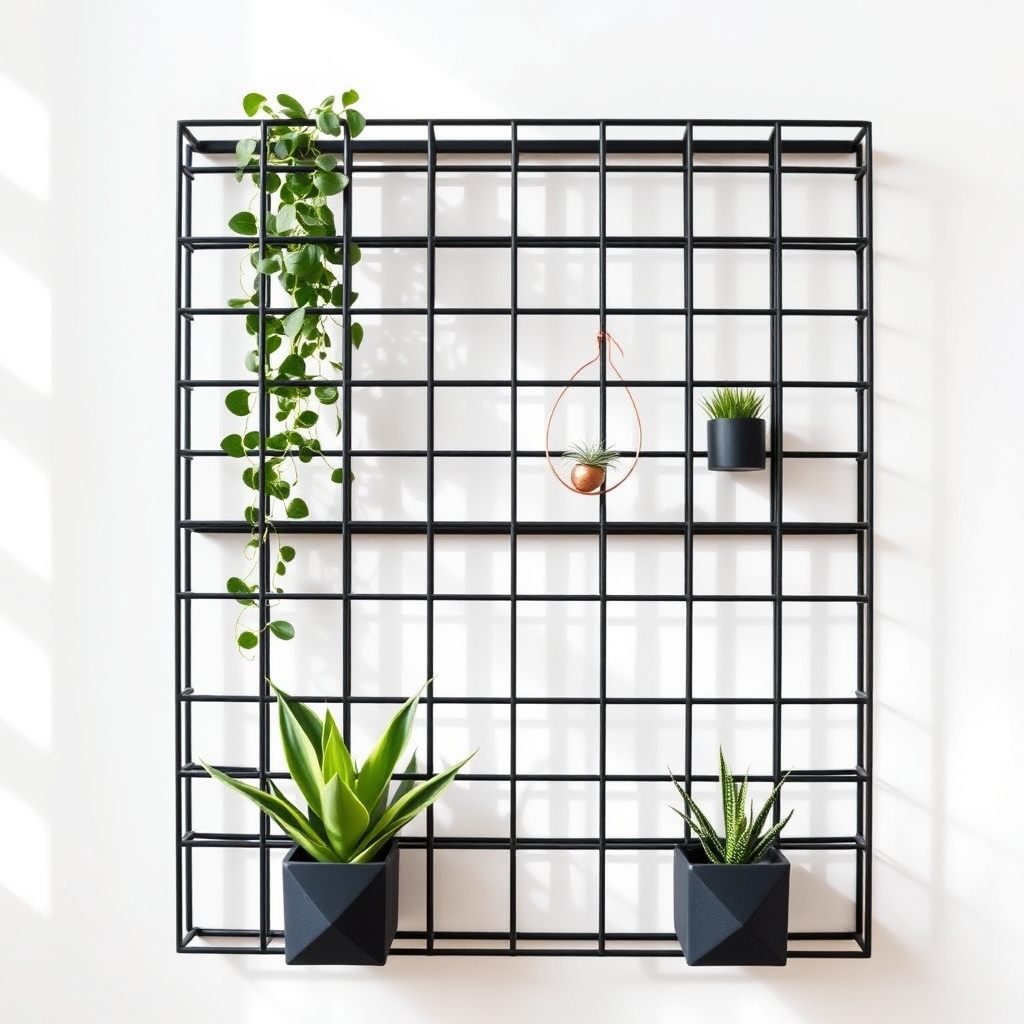
Geometric Plant Grid Systems combine modern minimalist design with natural elements using a structured wall-mounted framework.
The system consists of metal, wood, or acrylic grids arranged in patterns like squares, rectangles, or hexagons, where plants can be attached or hung at various points. Small potted plants, air plants, or climbing vines are positioned within the grid cells, creating a living art installation.
The modular nature allows for customizable arrangements and easy updates to the display. These systems often feature clean lines and systematic spacing, making them particularly suitable for contemporary interiors and spaces where organized, architectural plant displays are desired.
Vertical Succulent Arrangements

Vertical succulent arrangements transform ordinary wall spaces into living tapestries by mounting various succulent plants in a vertical orientation.
These displays typically feature multiple succulents arranged in patterns or artistic designs within frame-like structures or specialized wall-mounted planters. The arrangements combine different succulent species with contrasting colors, textures, and sizes, creating dimensional garden art that grows upward rather than outward.
A key characteristic is their water-efficient design, often incorporating well-draining soil mixtures and strategically placed irrigation systems to prevent water damage to walls.
These living walls require minimal space while delivering maximum visual impact, making them ideal for both indoor and outdoor spaces where floor space is limited.
Hanging Vine Cascades
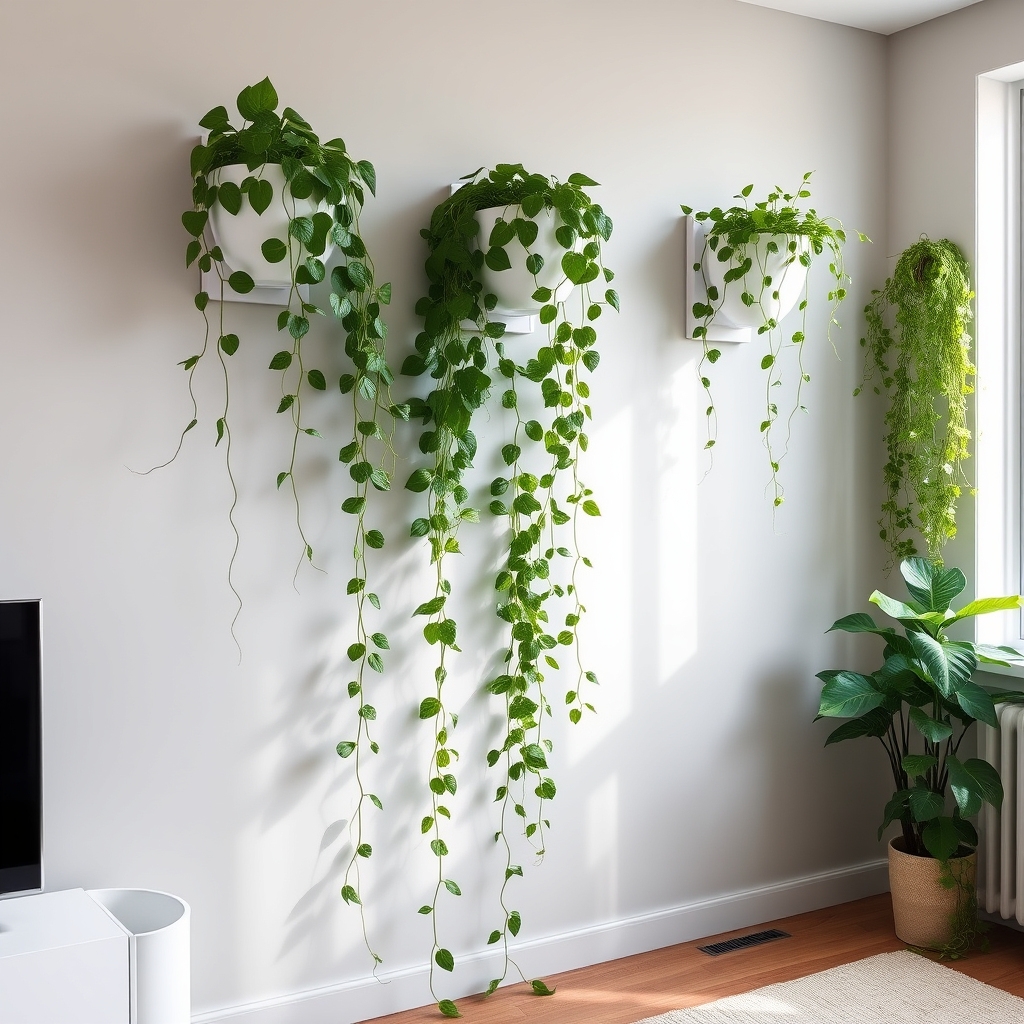
Hanging Vine Cascades are flowing, vertical arrangements of trailing plants that create dramatic green waterfalls along walls and from elevated planters.
These living displays feature long, trailing stems with cascading foliage that can extend several feet downward. Common plants used include pothos, philodendron, string of pearls, and ivy varieties.
The cascading effect adds movement and softness to interior spaces while maximizing vertical growing space.
These installations can be mounted directly on walls using wall-mounted planters, suspended from ceiling hooks, or positioned on high shelves, allowing the vines to naturally drape downward.
The length and fullness of the cascade can be managed through regular pruning and training of the vines.
Air Plant Gallery Displays
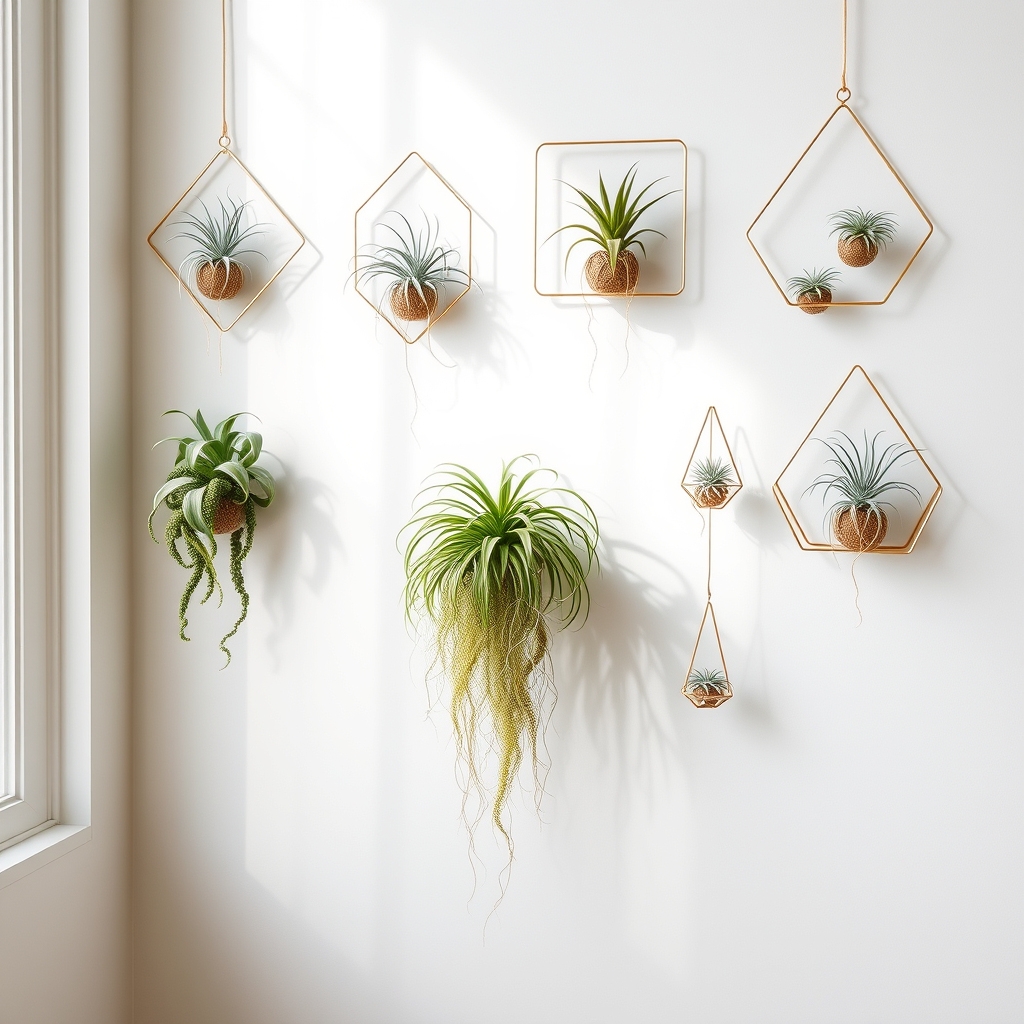
Air Plant Gallery Displays combine artistic presentation with living Tillandsia specimens arranged in creative wall-mounted configurations.
These installations typically feature multiple air plants positioned at varying heights and depths, often secured within geometric wire frames, glass terrariums, or wooden display boxes. The plants appear to float in space, requiring no soil and minimal care.
Key features include:
- Multiple air plants grouped together in visually balanced arrangements
- Mixed materials like wood, metal, or glass as mounting elements
- Various depths and layers creating dimensional interest
- Clean, modern aesthetic with natural elements
- Easy maintenance due to air plants’ minimal care requirements
The displays can be customized in size from small groupings to large-scale living wall art, making them adaptable for both residential and commercial spaces.
Modular Plant Wall Systems
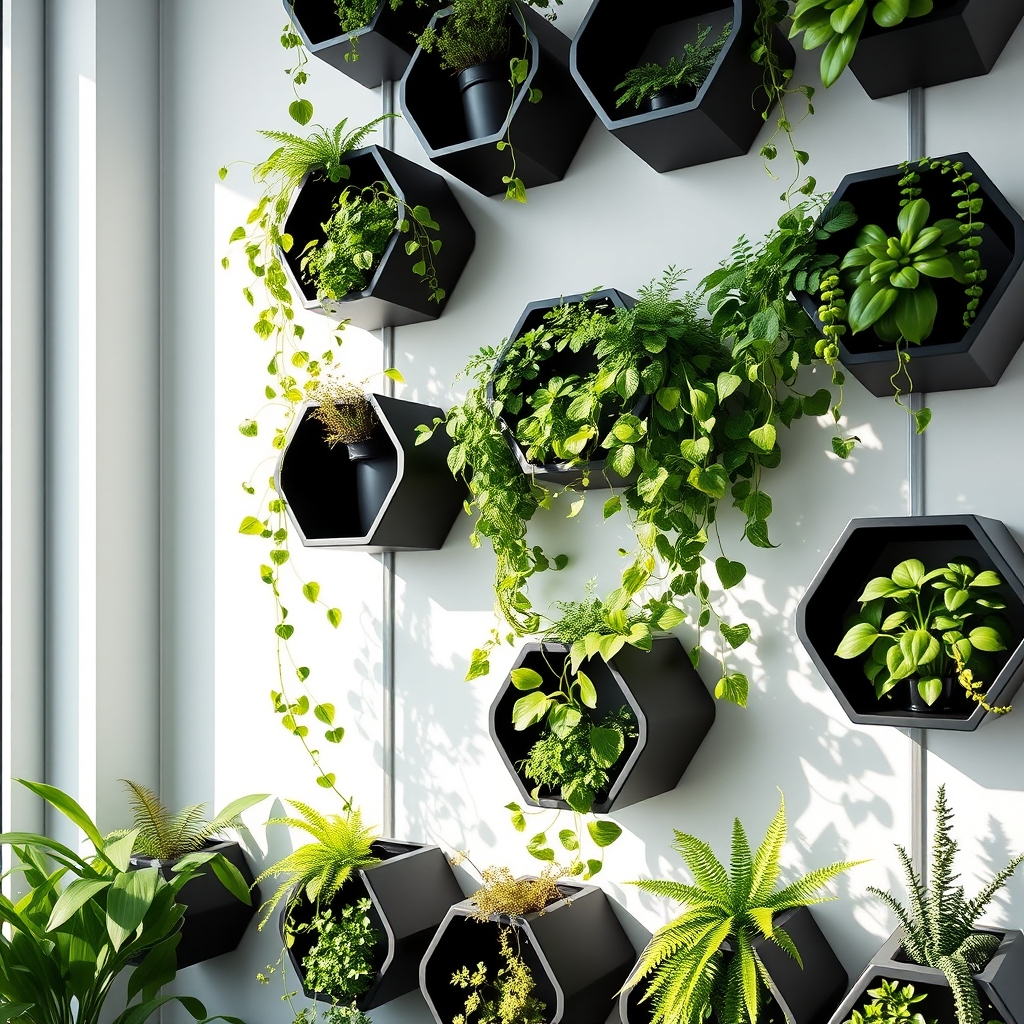
Modular Plant Wall Systems are customizable vertical gardening arrangements consisting of individual planting units that can be connected and rearranged.
These systems typically feature interlocking panels, pockets, or containers that attach to wall-mounted frames or grids. Each module can be independently filled with different plants, allowing for easy maintenance and design flexibility.
Key features include:
- Removable planting containers
- Built-in irrigation systems
- Lightweight mounting hardware
- Adjustable configurations
- Multiple size options
The appearance ranges from sleek, geometric patterns to organic, flowing designs, depending on the chosen module style and plant arrangement.
These systems can be expanded or reduced in size and often incorporate water-efficient drip systems for sustainable plant maintenance.
Preserved Moss Feature Walls

Preserved moss feature walls transform interior spaces into living art installations using real moss that has been preserved through natural processes.
These vertical displays combine different moss varieties like reindeer moss, sheet moss, and pole moss to create textured, maintenance-free green walls. The preserved moss retains its natural soft texture and vibrant green color without requiring water, sunlight, or trimming.
Typically mounted on backing panels, these feature walls can be customized into various patterns, logos, or artistic designs. The moss is treated with non-toxic preservatives that maintain its appearance for 5-10 years while providing acoustic benefits and improving indoor air quality.
Popular in corporate offices, hotels, and modern homes, preserved moss walls offer the aesthetic appeal of living walls without the extensive maintenance requirements.
Minimalist Plant Ladder Designs

Minimalist plant ladder designs feature clean-lined, simple ladder structures that lean against walls to display potted plants at varying heights.
These ladders typically consist of 4-6 rungs made from natural wood, powder-coated metal, or bamboo with a stripped-down aesthetic that eliminates unnecessary ornamentation.
The unique feature of these ladder displays lies in their space-efficient vertical orientation and movable nature, allowing plants to be arranged and rearranged without making permanent wall alterations.
Most designs incorporate flat platforms or specialized hooks on each rung to securely hold pots while maintaining the ladder’s sleek profile.
Common characteristics include:
- Angled placement against walls
- Neutral colors like white, black, or natural wood
- Slim profiles with minimal hardware
- Uniform spacing between rungs
- Stable base design to prevent tipping
- Easy assembly and disassembly for relocation
